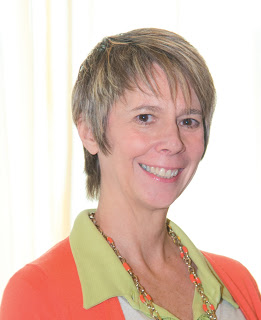Amber Thomas, Vice President of Advocacy at AMT

Amber Thomas, Vice President of Advocacy at AMT
#WiMHearHerStory | @WomeninMFG

At Women in Manufacturing, we are committed to supporting women in the manufacturing sector. We firmly believe that mentorship and community-building will help attract and retain women in manufacturing. As part of our mission, we feature on our blog the stories of women we admire who are currently working in manufacturing. The following is the latest installment of our "Hear Her Story" series.
Please tell our readers a little bit about your job and what your work looks like every day.
I’m responsible for overseeing the Association for Manufacturing Technology’s (AMT) advocacy strategy. At AMT, advocacy encompasses both government relations and public affairs. Government relations focuses on garnering congressional support for initiatives that achieve three primary goals: level the global playing field, support R&D investment and innovation, and build a 21st century workforce (AMT calls it the “Smartforce”). Public affairs centers on using the media to change the perception of manufacturing and to urge action on important issues. A typical day is spent reviewing the state-of-play on key legislation; attending a coalition meeting or paying a visit to a Capitol Hill office; answering questions and giving updates to AMT members; issuing a press release on important news; writing a magazine article; doing a little social media, etc. All of these efforts are ultimately aimed at the same thing: improving American manufacturing competitiveness.
How did you arrive at your current position? What attracted you to a career in manufacturing?
Some paths take unexpected turns. I always wanted a career in politics. After I graduated college, I moved straight to D.C. My first job wasn’t on Capitol Hill as I’d hoped, but it was in the vicinity and would pay the bills while I got settled. And so began my career in manufacturing – as a receptionist for the National Machine Tool Builders’ Association, now known as AMT. Thirty years later, I’m in my dream job advocating for an industry that is the backbone of this country. Part of my job now is to urge lawmakers to support initiatives that attract young people to manufacturing careers.
At WiM, much of our work is dedicated to refuting outdated stereotypes about the manufacturing sector: stereotypes like the workplaces are dirty and dangerous and that the field and skills required are a better fit for men. Have you encountered stereotypes like these in your education or career and how did you overcome them?
As a woman in the business world, you always encounter stereotypes. But I have to admit, I had the same view of manufacturing growing up, coming from a western Pennsylvania town where steel, coal and rail were the major industries. I knew those jobs paid well, but they were too dirty and dangerous for me. Fast forward 40 years, and take a look inside today’s factories. Contrary to the stereotype, they are modern and loaded with high-tech equipment doing amazing things. Unfortunately, one thing obviously hasn’t changed; there are still very few women on the shop floor. Exposing young women and our elected officials, many of whom still hang on to the old stereotype, to the real world of manufacturing is critical for changing the outdated perception. Plant tours, open houses, events like MFG Day and shows like IMTS are great ways to begin the conversation that will eventually change the mindset.
Research shows that women, especially women in STEM fields, do better if they have a mentor. Has mentorship played any role in your career?
Absolutely. I’ve had many mentors that made important contributions throughout my career. My first boss in government relations taught me things about the legislative process that aren’t written in text books. He also impressed upon me the importance of honesty and integrity in lobbying Congress. My current boss continues to show me manufacturing from a manufacturer’s perspective and encourages me to think outside of the box. All of my mentors taught me aspects of leadership, manufacturing and life that I would never know if not for them.
One of the key findings in WiM’s survey is that there is significant overlap between what young women want in careers and the attributes of careers in manufacturing today. But the survey also found that, too often, young women are not aware of the opportunities available in manufacturing. What do you think can be done to spread the word to women about career options in modern manufacturing?
You’ve touched on a few. Groups, like WiM and it’s partners, do a great job getting the word out. Mentors can play a big role in encouraging women to consider careers in manufacturing, and women currently working in manufacturing make great role models. Successful partnerships between businesses, community organizations and schools are reaching more and more students, parents and educators with information on careers in manufacturing. Are they reaching out to school-aged girls, sororities and women’s groups? I’m not sure, but I am sure that we need to make diversity more of a priority in some of these efforts.
Our survey also found that the majority of women in manufacturing today would recommend the sector to young women considering career options. Would you recommend a career in manufacturing? And, if so, why?
You bet. Opportunities are abundant. The wages are excellent. There’s access to the most advanced technology and innovative products in the world. All skill sets are welcome; from apprentices and community college graduates to those with 4-year degrees and PhDs. Training and education are often offered. And for those women who want to change the world, a career in manufacturing means making an impact in an industry that is key to U.S. economic growth, job creation and national security. In manufacturing, there is literally something for everybody.
